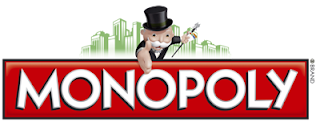Oligopoly! A realistic market structure!
What is an Oligopoly?
- an Oligopoly is a Market structure where few large firms dominate an industry.
- the 4 largest firms together have a high market concentration.
There are two types of Oligopolies:
- Collusive
- Non-collusive
1. Collusive -
Formal Collusive Oligopoly - takes place when firms openly agree on the prices that they will charge, although sometimes it may be agreement on market share or on marketing expenditure.
Tacit Collusive Oligopoly (or price leadership) - exists when firms in an Oligopoly charge the same without any formal collusion (i.e without openly agreeing on prices). They look at the prices of the dominant firm in the market, or in at the prices of main competitors.
Collusion is considered to be illegal in most countries, for example in entire Europe and USA.
Hard core cartels (when firms agree not to compete with one another) are the most serious violations of competition law. They injure customers by raising prices and restricting supply, thus making goods and services completely unavailable to some purchasers and unnecessarily expensive for others.
The categories of conduct most often defined as hard core cartels are:
- price fixing
- output restrictions
- market allocation
- bid rigging (the submission of collusive tenders)
Hard-core cartel prosecution is a priority policy objective for the OECD. Increasingly, the prohibition against hard core cartels is now considered to be an indispensable part of a domestic competition law.
Formal collusion between governments may be permitted. The main example is OPEC (the Organisation of Petrol Exporting Countries), which sets production quotas and prices for the world oil market.
2. Non-collusive-
Non-collusive Oligopoly - exists when the firms in an Oligopoly do not collude and so have to be very aware of the reactions of other firms when making price decisions.
Fixed broadband supply in the UK is dominated by four main suppliers - BT (with a market share of 32%), Virgin Media (at 20%), Sky (at 22%) and TalkTalk (at 14%), making a four-firm concentration ratio of 86% (2015). Source: OFCOM.
For Petrol Market in UK, refer to the diagram below:👇😁





